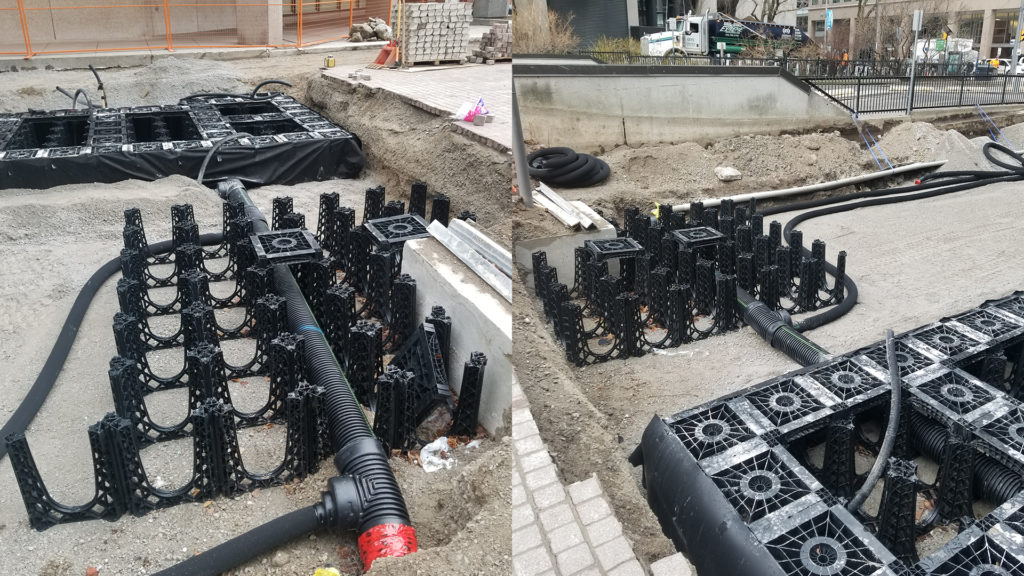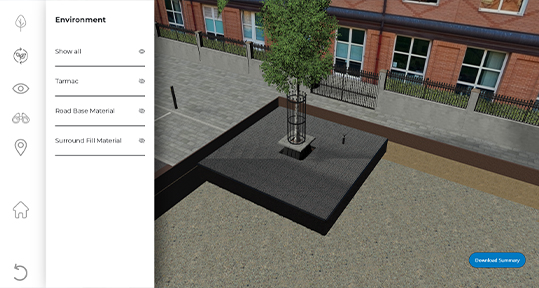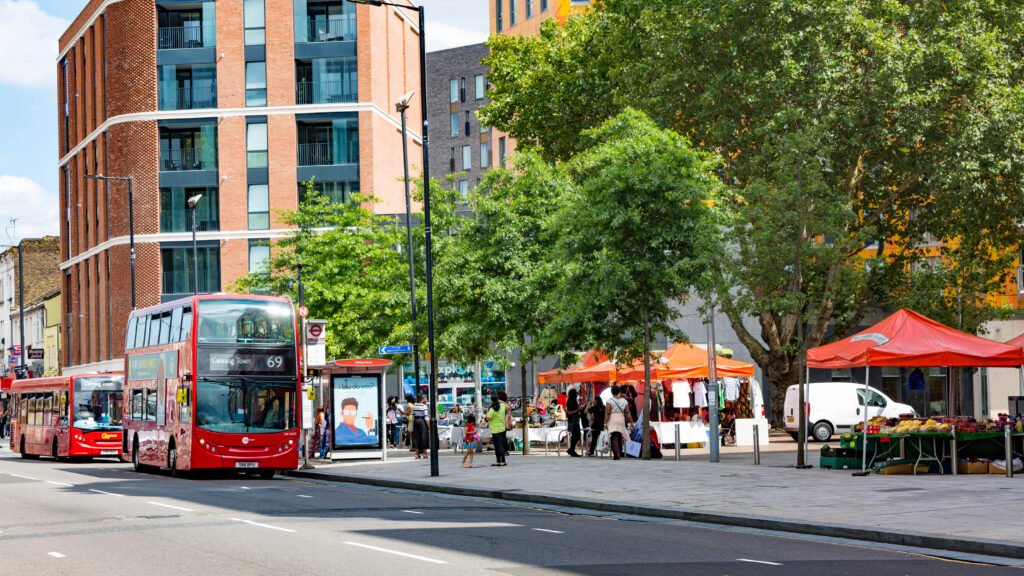Every year, over 1.3 million visitors pass through the Jack Layton Ferry Terminal on their way to Toronto’s most beloved parks on the Toronto Islands.
Every year, over 1.3 million visitors pass through the Jack Layton Ferry Terminal on their way to Toronto’s most beloved parks on the Toronto Islands. Due to its prime location on the water’s edge and its important role as a transportation hub, Waterfront Toronto took on the large task of revitalizing the terminal and giving the surrounding area the prominence it deserves as a welcoming point for residents and visitors.
The innovative design competition to develop the bold new vision for the 11-acre Jack Layton Ferry Terminal and Harbour Square Park was launched in 2014, with 33 design teams from 12 countries submitting proposals during the prequalification stage. The primary goal of the design competition being to create an inspiring master plan that could be completed over time in phases. The winning team included landscape architecture firm West 8 based in Rotterdam, Netherlands.
The proposal created a waterfront park that personified the iconic ferry terminal and enhanced accessibility, while offering spectacular views of the harbour to complement its proximity to the lake. The original pathway was nearly doubled in width to accommodate the large pedestrian crowds, with a row of new trees planted on both sides of the expanded walkway.

Project
Location
Contractor
Landscape Architect
Every year, over 1.3 million visitors pass through the Jack Layton Ferry Terminal on their way to Toronto’s most beloved parks on the Toronto Islands.
Every year, over 1.3 million visitors pass through the Jack Layton Ferry Terminal on their way to Toronto’s most beloved parks on the Toronto Islands. Due to its prime location on the water’s edge and its important role as a transportation hub, Waterfront Toronto took on the large task of revitalizing the terminal and giving the surrounding area the prominence it deserves as a welcoming point for residents and visitors.
The innovative design competition to develop the bold new vision for the 11-acre Jack Layton Ferry Terminal and Harbour Square Park was launched in 2014, with 33 design teams from 12 countries submitting proposals during the prequalification stage. The primary goal of the design competition being to create an inspiring master plan that could be completed over time in phases. The winning team included landscape architecture firm West 8 based in Rotterdam, Netherlands.
The proposal created a waterfront park that personified the iconic ferry terminal and enhanced accessibility, while offering spectacular views of the harbour to complement its proximity to the lake. The original pathway was nearly doubled in width to accommodate the large pedestrian crowds, with a row of new trees planted on both sides of the expanded walkway.

Project
Location
Contractor
Landscape Architect
Project
Location
Contractor
Landscape Architect
Urban trees planted in soil cells have been found to grow much more quickly, preventing soil compaction nad allowing for larger volumes of healthy soil.
Louis-Thomas Kelly - Urban Toronto.ca article
These trees were planted in GreenBlue Urban’s RootSpace ArborSystem, an industry-leading engineered pavement support system in use by hundreds of municipalities across many countries around the world. The ArborSystem includes soil cells, root management, irrigation/aeration, root ball guying support, and aboveground tree protection – everything an urban tree needs to thrive and reach maturity in a hardscape environment. The double row of soil cells supporting the trees along the length of the walkway will allow the trees to mature quickly, forming a shady archway to the entrance to the terminal.
Urban trees planted in soil cells have been found to grow much more quickly, preventing soil compaction and allowing for larger volumes of healthy soil.
Although this promenade functions as a pedestrian-only area, the surface is designed and rated for Canadian Highway Bridge Design Code. Due to the high strength capacity of the RootSpace, it is rated for AASHTO H-20 loading and is approved for use under maximum vehicular areas with minimal surface.
The City of Toronto is well known for its aggressive soil volume standard of a minimum 30 cubic meters (1000 cubic feet) of healthy uncompacted soil per tree, reduced when linking tree pits together. Incorporating the use of the RootSpace soil cells for tree in hardscape surfaces is used frequently in Toronto projects to meet these strict guidelines. Other municipalities around the world are also starting to introduce minimum soil volume requirements.
Urban trees planted in soil cells have been found to grow much more quickly, preventing soil compaction nad allowing for larger volumes of healthy soil.
Louis-Thomas Kelly - Urban Toronto.ca article
These trees were planted in GreenBlue Urban’s RootSpace ArborSystem, an industry-leading engineered pavement support system in use by hundreds of municipalities across many countries around the world. The ArborSystem includes soil cells, root management, irrigation/aeration, root ball guying support, and aboveground tree protection – everything an urban tree needs to thrive and reach maturity in a hardscape environment. The double row of soil cells supporting the trees along the length of the walkway will allow the trees to mature quickly, forming a shady archway to the entrance to the terminal.
Urban trees planted in soil cells have been found to grow much more quickly, preventing soil compaction and allowing for larger volumes of healthy soil.
Although this promenade functions as a pedestrian-only area, the surface is designed and rated for Canadian Highway Bridge Design Code. Due to the high strength capacity of the RootSpace, it is rated for AASHTO H-20 loading and is approved for use under maximum vehicular areas with minimal surface.
The City of Toronto is well known for its aggressive soil volume standard of a minimum 30 cubic meters (1000 cubic feet) of healthy uncompacted soil per tree, reduced when linking tree pits together. Incorporating the use of the RootSpace soil cells for tree in hardscape surfaces is used frequently in Toronto projects to meet these strict guidelines. Other municipalities around the world are also starting to introduce minimum soil volume requirements.
But the soil within the RootSpace system at Jack Layton Ferry Terminal is providing a lot more than just rooting volume for these 19 trees – it is also providing 3,300 cubic feet (94 cubic meters) of stormwater storage. That’s nearly 25,000 gallons of stormwater attenuation! And of that 25,000 gallon capacity, some if it is taken up by the tree through irrigation and evapotranspiration while whatever is not removed by the tree is treated by the soil and improved in quality prior to exiting the RootSpace and entering the storm sewer.
Channeling the stormwater into the RootSpace system, is a 4″ Linear Drain that takes runoff from the walkway and distributes it throughout the soil volume inside the RootSpace system. This Linear Drain has a “shut-off” that can be turned on during the winter months to divert the salt-laced runoff from the winter months directly to the storm sewer. This storm sewer bypass also acts as an overflow mechanism in the event that the system becomes inundated during an abnormally high rainfall event.
As explained by Louis-Thomas Kelly in an UrbanToronto.ca article, “urban trees planted in soil cells have been found to grow much more quickly, preventing soil compaction and allowing for larger volumes of healthy soil.” Soil cells also provide stormwater treatment, using the soil within them to attenuate stormwater, reducing urban runoff while removing pollutants. Healthy urban trees and sustainable stormwater management – you might call that a best of both worlds’ scenario.
But the soil within the RootSpace system at Jack Layton Ferry Terminal is providing a lot more than just rooting volume for these 19 trees – it is also providing 3,300 cubic feet (94 cubic meters) of stormwater storage. That’s nearly 25,000 gallons of stormwater attenuation! And of that 25,000 gallon capacity, some if it is taken up by the tree through irrigation and evapotranspiration while whatever is not removed by the tree is treated by the soil and improved in quality prior to exiting the RootSpace and entering the storm sewer.
Channeling the stormwater into the RootSpace system, is a 4″ Linear Drain that takes runoff from the walkway and distributes it throughout the soil volume inside the RootSpace system. This Linear Drain has a “shut-off” that can be turned on during the winter months to divert the salt-laced runoff from the winter months directly to the storm sewer. This storm sewer bypass also acts as an overflow mechanism in the event that the system becomes inundated during an abnormally high rainfall event.
As explained by Louis-Thomas Kelly in an UrbanToronto.ca article, “urban trees planted in soil cells have been found to grow much more quickly, preventing soil compaction and allowing for larger volumes of healthy soil.” Soil cells also provide stormwater treatment, using the soil within them to attenuate stormwater, reducing urban runoff while removing pollutants. Healthy urban trees and sustainable stormwater management – you might call that a best of both worlds’ scenario.









